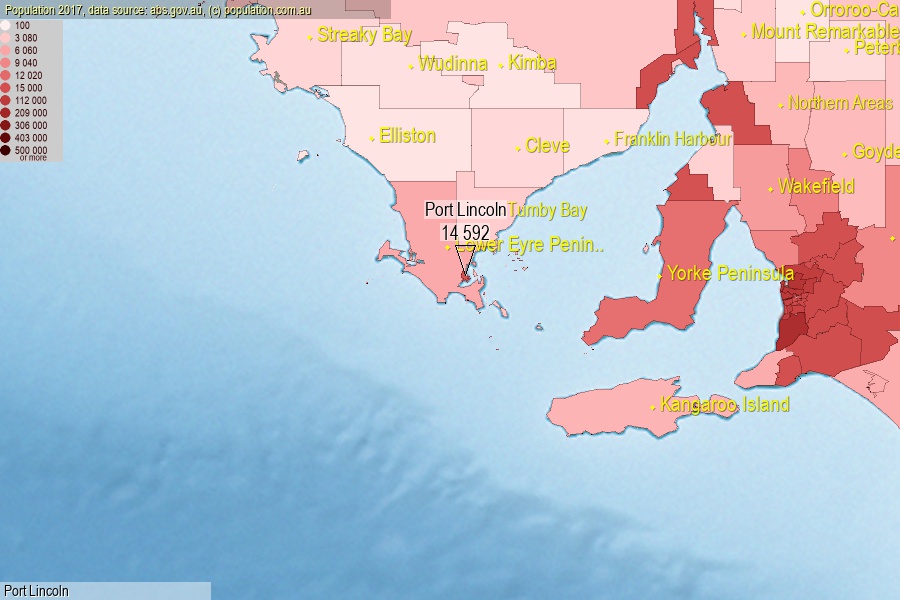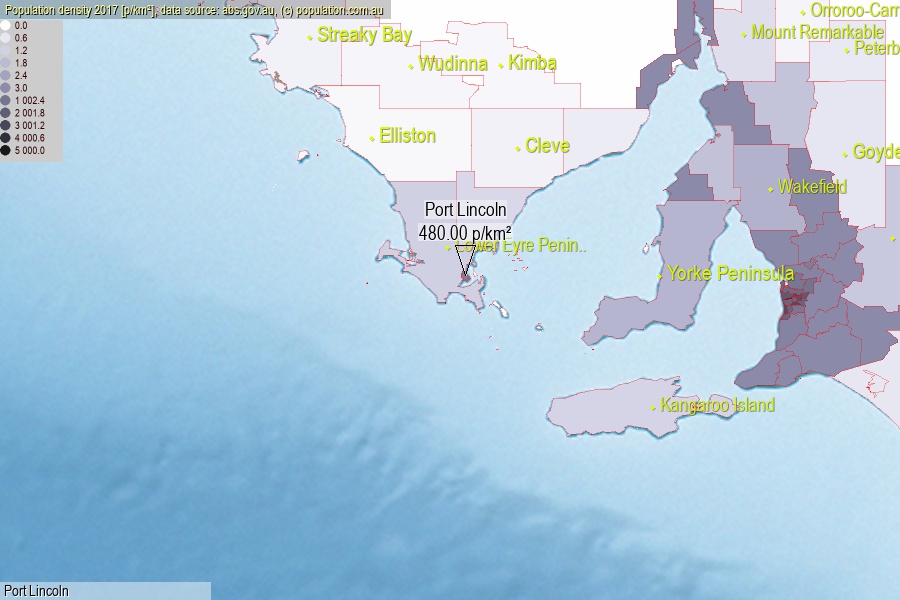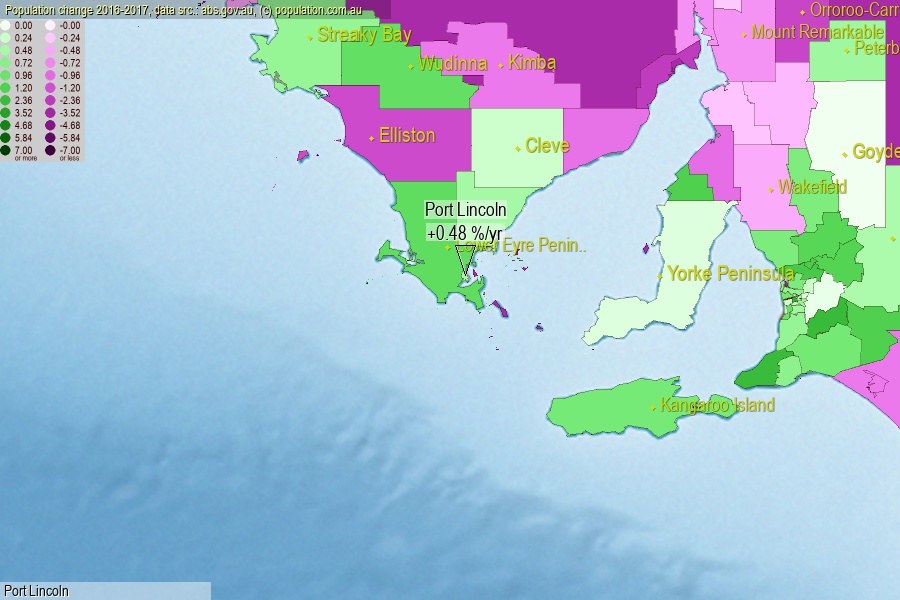 population.com.au
population.com.auLast official estimated population of Port Lincoln City (as Local Government Area) was 14 592 people (on 2017-06-30)[2]. This was 0.06% of total Australian population and 0.842% of SA population. Area of Port Lincoln is 30.40 km², in this year population density was 480.00 p/km² . If population growth rate would be same as in period 2016-2017 (+0.48%/yr), Port Lincoln population in 2025 would be 15 156. [0]



Click to enlarge. Port Lincoln is located in the center of the images.
Population [people], population density [p./km²] and population change [%/year] [2]
[1996-2001] +1.50 %/Y
[2001-2002] +0.39 %/Y
[2002-2003] +0.69 %/Y
[2003-2004] +0.01 %/Y
[2004-2005] +0.14 %/Y
[2005-2006] +0.34 %/Y
[2006-2007] +0.60 %/Y
[2007-2008] +0.79 %/Y
[2008-2009] +0.76 %/Y
[2009-2010] +0.47 %/Y
[2010-2011] +0.21 %/Y
[2011-2012] +0.23 %/Y
[2012-2013] +0.25 %/Y
[2013-2014] +0.44 %/Y
[2014-2015] -0.07 %/Y
[2015-2016] -0.43 %/Y
[2016-2017] +0.48 %/Y
[0] Calculated with linear interpolation from officially estimated population
[1] Read more about LGA and Australian Statistical Geography Standard (ASGS) on abs.gov.au
[2] Population data from Australian Bureau of Statistics (Population and density: 2017; change: 2016-2017)
[3] Digital Boundaries: Australian Statistical Geography Standard (ASGS) 2016.